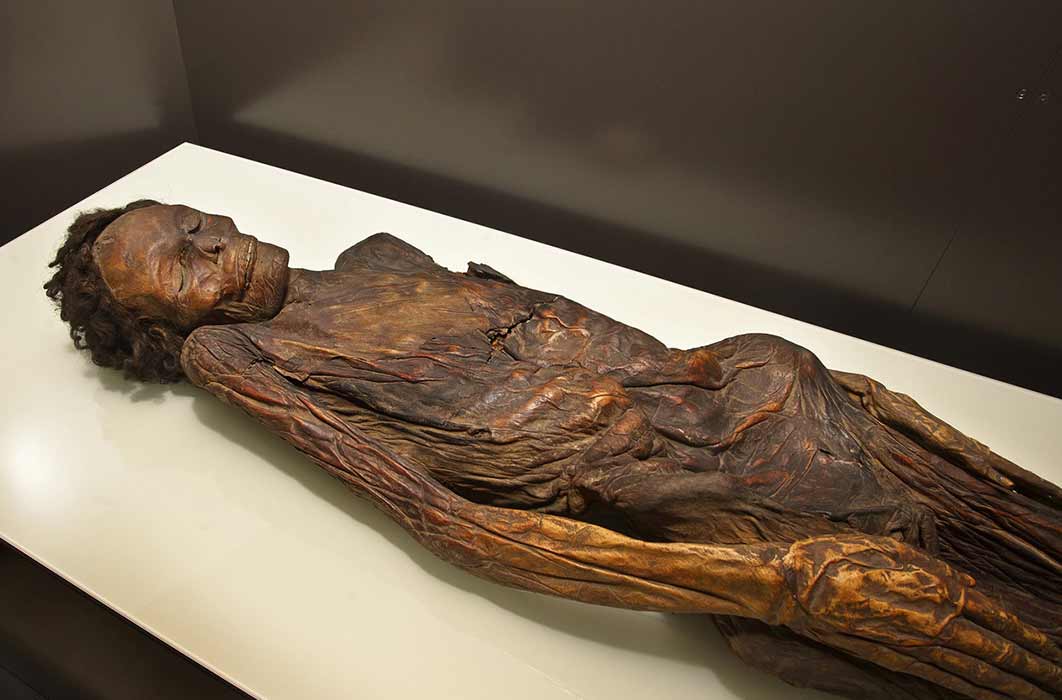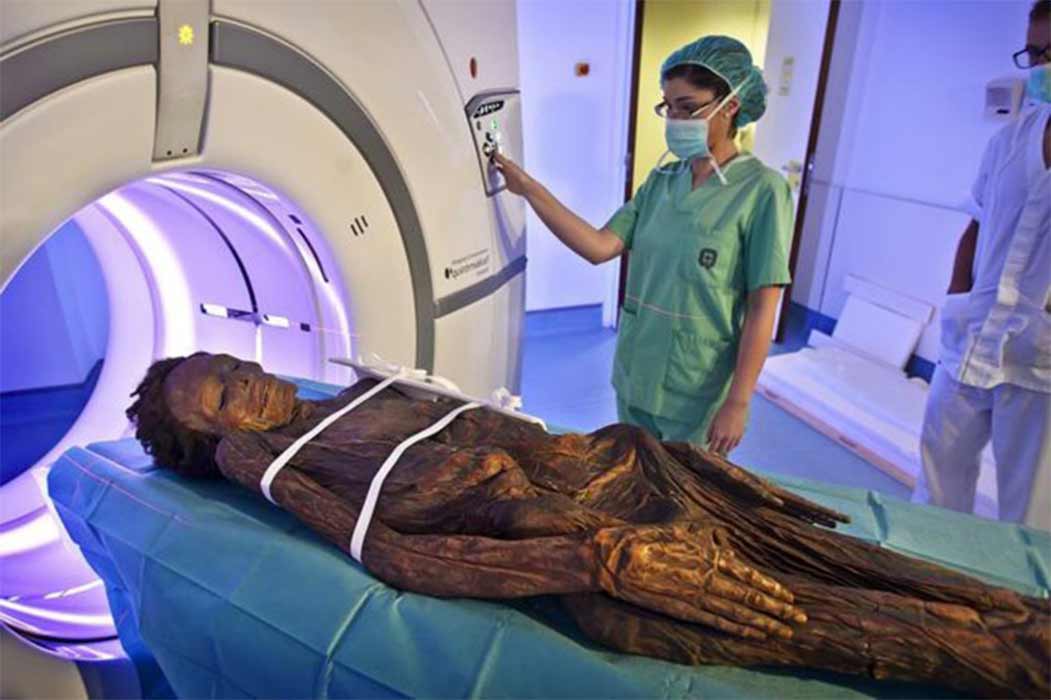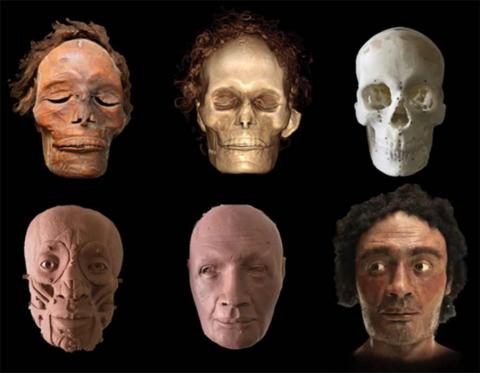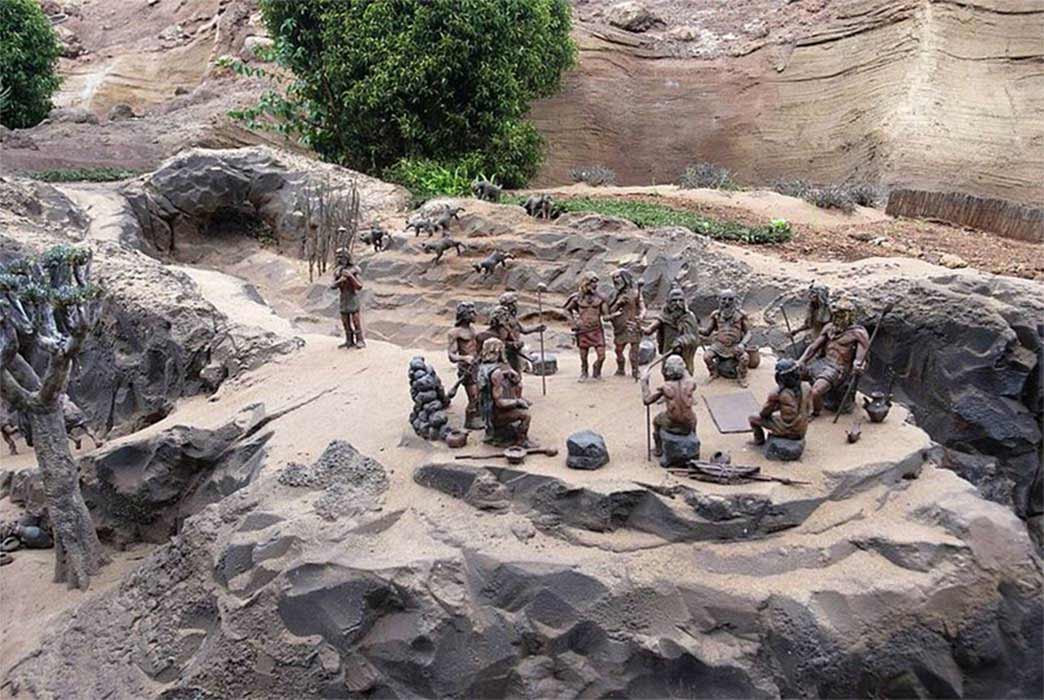
Famous Gaunches Mummies Drenched In Dragons’ Blood Like A Stradivarius Violin
From 1494 to 1496, the island of Tenerife was beset by a military invasion. The conquerors and soldiers of the Castilian kingdom of Castile and Aragon deployed numerous troops to subdue the hardened inhabitants of the island: the formidable Guanches, who had been settled in all the Canaries Islands for thousands of years and whose total population has been estimated at about 100,000 inhabitants by that distant, and fateful, 15th century. Migrating from the neighboring African continent, and more specifically from its northern region, they arrived by their own means and by boats from areas of Western Sahara, Morocco or Tunisia.

The mummy entering the scanner for a computerized axial tomography at Hospital Quirón, Madrid. (Image: Author Provided. Hospital Quirón)
The recent production of the documentary Las momias guanches (The Guanche Mummies), co-produced by RTVE and Story Producciones, has shown in great detail the anatomy and ethnography of the best Guanche mummy preserved to date, of Mencey a Guanche chief, about 40 years old. A team of scientists and artists that include doctors, archaeologists, historians, sculptors and graphic designers used the most advanced techniques of computerized axial tomography to investigate the mummies. For the past five years these unique specimens have been subjected to DNA tests, high-level radiological studies, carbon-14 tests, forensic reconstructions or ultraviolet light studies. Thanks to the study of these mummies, it has been possible to answer the many questions previously hidden about the Guanche culture. Where did they originate from before migrating to the Canary Islands? Why do they share physical features with northern Europeans? Did they have ties to Egypt? According to the documentary, the Guanches achieved a mummification technique so prodigious, studied and effective that many consider it to be equal to the Egyptian one.

Facial reconstruction based on the computer images. (Image: Author Provided. Juan Villa / Story Producciones.)
Cave Of A Thousand Mummies
In 1774 Anchieta, and Alarcón, wrote: "On a very high cliff is a cave in which, having gone with others from Güímar, D. Luís Román, they entered a very large cave which they filled with more than two hundred wooden fire lanterns, to see well what was inside and they found many bodies of Guanches, which must have been the burial place there and that was around the sides of the cave, many like scaffolding, like tents, juniper sticks and on those scaffolds were the bodies of the Guanches lying, mirlados (mummified). One of these bodies, the most perfected that not even the tip of the nose lacked, was sent to a well-adjusted drawer with wool to D. Francisco Machado, alderman, son of Álvaro Yanes Machado and brother-in-law of the said D. Gabriel [Román, brother of Luís], who is at the Court, so that it can be seen how there are bodies preserved after so many years”.

Reconstruction of a Guanche settlement of Tenerife (Wouter Hagens/ CC BY-SA 3.0)
The cave to which this historical quote refers is the mysterious, unknown, coveted and widely sought-after Cave of a Thousand Mummies. Located in the famous Barranco de Herques, which divides the Tenerife municipalities of Güímar and Fasnia, it has been searched for by hundreds of people, without much success. Its interior must have housed between 600 and 1,000 mummified Guanches. One may ask, is it literary fantasy, capital exaggeration, or a true Guanche communal burial and mummification cave? It is not the first time that large Guanche vaulted caves have been found that housed several dozen individuals inside, something that also occurs on the neighboring island of Gran Canaria. However, the Guanches cave is reluctant to reveal its location, even after hundreds of years have passed since a group of Spaniards stole the mummy that occupied such a magical place.




